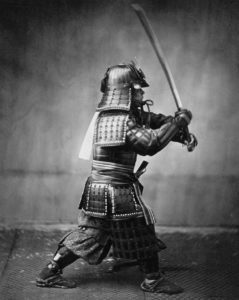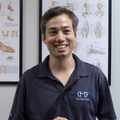
After recently writing an article called Fascinating Facts About Tendons, I was asked a very important question: How can we “bulletproof” our tendons? This question is incredibly important, as soft-tissue injuries are the most common musculoskeletal injury in all manners of sport, work, and daily life. Our muscles tendons and ligaments make up the majority of what we can collectively call “soft-tissue”.
There are various fields working on providing better answers for this question. Fields like genetics, biomechanics, exercise physiology, sports medicine, nutrition, bioengineering, and many more. Not long ago, in the 1960’s, it was believed that tendons were like hard wires without elastic properties (Kjaer et. al 2006). We now know that that is not the case and tendons are, in fact, capable of storing elastic energy similar to a spring or rubber band. What’s also newer knowledge, is how dynamic and plastic these tissues really are. What science continues to reveal is that physiological changes in tendons, are a direct response to exactly the type of load they are under and the nutrients available to them. Depending on the type of load and the available nutrients, tendons can change from stiff to pliable or vice versa. More on this later, as I believe this is key in the “bulletproofing” of tendons.
First, let’s take a quick look at the tendon’s composition. A tendon is about 40%-50% water and the rest is densely packed connective tissue, primarily composed of collagen and other proteins. The densely packed connective tissue is divided into fibrils, fibers, fiber bundles, and fascicles (Kannus 2000) (Fig 1 below). Similar to a rope, a tendon’s design allows for high tensile forces and its individual fibrils allow for microdamage, without compromising the whole (Kjaer 2006). Since the dry weight of a tendon is mostly composed of collagen, the turnover of collagen is very important to tendon health. Collagen is also highly involved in the cross-links in tendons. In short, the greater amount of cross-links, the “stiffer” the tendon and the lesser amount of cross-links, the more “pliable” the tendon. We want the Goldilocks Effect: to have things “just right.”
Now that we know what tendons are composed of, let’s look at how load and nutrition affect tendons. So not only do we want turnover of collagen (periods of proliferation and periods of degradation) we also want to be able to influence how these collagen fibers are cross-linked. It’s hard to know just what’s happening to our tendons when we exercise, since we can’t just hold them under a microscope. But, what if we could engineer a tendon outside of the body and stress it in different ways, to see what stimulates collagen turnover and cross-linking? Keith Baar, a researcher from the University of California, and his colleagues did just that. They were able to engineer and test connective tissue. In summary, this is what they found (Baar et. al. 2017):
- It took 10 minutes to get a maximum positive response on collagen synthesis. After 10 minutes, no additional response was seen in the tissue. Only after 6 hours of rest could a response once again be produced. In other words, optimum soft-tissue health and repair can likely be done with 10 minutes or less of exercise a few times per day with 6 hours of rest time in between sessions.
- Leucine-rich proteins can help tendon health in those who are training. Whey-protein isolate is usually a good source of this.
- Gelatin and vitamin C can increase collagen synthesis for tendon health, especially if taken 1 h before a 10 minute bout of exercise of the tendon
- Fast exercise, as seen in most sports, adds more cross-links to tendons, making them “stiffer” over time. Slow movement exercises, like tendon rehab exercises, can create more “pliable” tendons. If the goal is to prevent injury, we need to find that Goldilocks Zone, in which athletic performance and injury prevention meet.
I believe that in order to bulletproof our tendons we must apply the current science and how it may apply to you. If for example you’re a golfer, your upper extremity tendons are likely most at risk. Your plan may look as follows:
- Shoulder and arm care program with corrective exercises which appropriately stress the tendons of the shoulders, arms, and forearms performed with 6 hours of rest before regular training.
- Specific provider delivered soft-tissue work to address soft-tissue dysfunction and scar-tissue
- Working together with a swing coach to reduce inefficiencies in the golf swing
- Golf-specific training
- When tendon injuries occur, start corrective exercise and treatment as soon as possible for optimal results.
- Eat leucine-rich foods (fish, nuts, seeds, beans, etc.), vitamin C, gelatin, and msm supplementation for improved collagen synthesis.
A soccer player would have similar needs, but for the major tendons of their lower extremity. They would benefit most from corrective exercises that appropriately stressed their achilles tendons, patellar tendons, and hamstring tendons.
Since exercise has a global effect on collagen synthesis necessary for soft-tissue health, it would behoove everyone (young and old) to participate in regular exercise, if tendon health is your goal. Keeping in mind that sports that use a lot of explosive force create greater tendon stiffness and movements which are more slow and methodical create more pliability, it would be wise to balance out the two, by incorporating both types of exercises into your lifestyle. For example, utilizing fast athletics for improved performance and slow rehab/methodical exercises for tendon health. Tai Chi and some styles of Yoga would fit into the slow methodical category and could help balance the effects of more rigorous training or physical activity.
©CenterForMusculoskeletalFunction2018
References
Baar, K. (2017). Minimizing Injury and Maximizing Return to Play: Lessons from Engineered Ligaments. Sports Medicine, 47(S1), 5-11. doi:10.1007/s40279-017-0719-x
Butawan, M., Benjamin, R., & Bloomer, R. (2017). Methylsulfonylmethane: Applications and Safety of a Novel Dietary Supplement. Nutrients, 9(3), 290. doi:10.3390/nu9030290
Galloway, M. T., Lalley, A. L., & Shearn, J. T. (2013). The Role of Mechanical Loading in Tendon Development, Maintenance, Injury, and Repair. The Journal of Bone and Joint Surgery-American Volume, 95(17), 1620-1628. doi:10.2106/jbjs.l.01004
Kannus, P. (2000). Structure of the Tendon Connective Tissue. Scan J Med Sci Sports, 10, 312-320.
KJÆR, M. (2004). Role of Extracellular Matrix in Adaptation of Tendon and Skeletal Muscle to Mechanical Loading. Physiological Reviews, 84(2), 649-698. doi:10.1152/physrev.00031.2003
Kjær, M. (2010). PL4 Role of GH/IGF-I in adaptation of matrix in skeletal muscle and tendon to exercise. Growth Hormone & IGF Research, 20, S7. doi:10.1016/s1096-6374(10)70020-4
Shaw, G., Lee-Barthel, A., Ross, M. L., Wang, B., & Baar, K. (2016). Vitamin C–enriched gelatin supplementation before intermittent activity augments collagen synthesis. The American Journal of Clinical Nutrition, 105(1), 136-143. doi:10.3945/ajcn.116.138594








